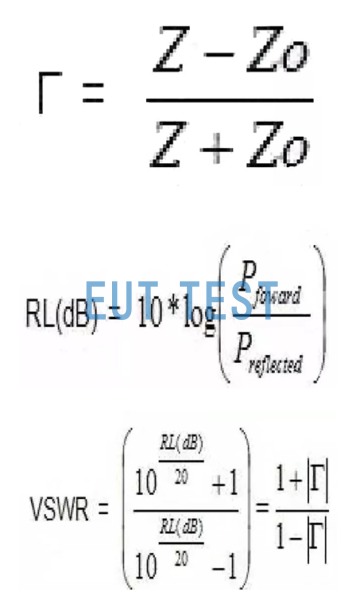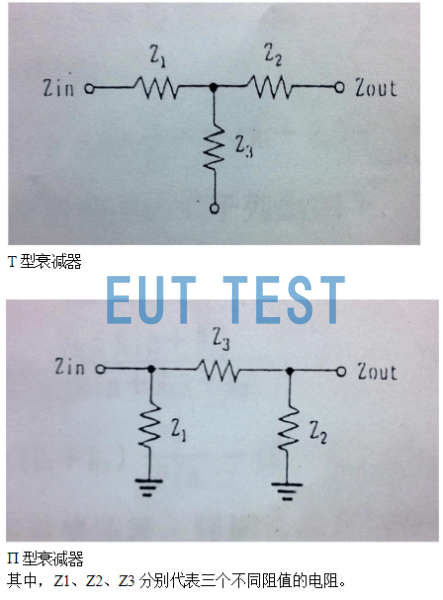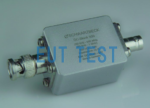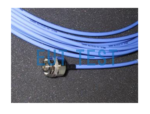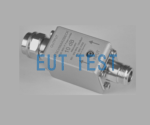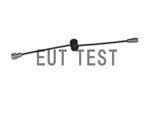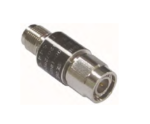Why use an attenuator?
RF engineers in the lab forEMC Electromagnetic Compatibility TestingWhen, to prevent EMI receiverOverloaded or large signal inputs damage the pre-filters, typically using a 50Ω coaxial attenuator to reduce the size of the input signal.
Shenzhen EUTTEST can produce customized fixed attenuator or variable attenuator products, we provide attenuator products have no fixed parameters, you can refer to the following attenuator customization needs to be determined before the type of attenuator, the role of the main technical specifications, etc., and then to the EUTTEST put forward the requirements of the technical parameters of your attenuator, and finally we will produce domestic attenuator products to meet your requirements. At last, we will produce domestic attenuator products for you to meet your requirements.
The role of the attenuator:
- Adjusts the size of the signal in the signal pathway;
- In comparative measurement circuits, it can be used to directly read the attenuation value of the network under test;
- Improved impedance matching.
If some circuits require a more stable load impedance, an attenuator can be inserted between this circuit and the actual load impedance to buffer impedance changes. For example, EMC testing is commonly used 50 ohm attenuator to mitigate the impedance change of the output path is too long, in order to reduce the impedance mismatch caused by the return loss problem. And can be matched with a small power meter, comprehensive tester orspectrum analyzerAccurately measure the power or spectrum of various RF microwave transmitters.
Custom attenuator optional type:
Fixed attenuator
Fixed attenuators cannot modify the attenuation size, so the amount of attenuation should be determined prior to production.
Variable Attenuator
The variable attenuator modifies the size of the attenuation.
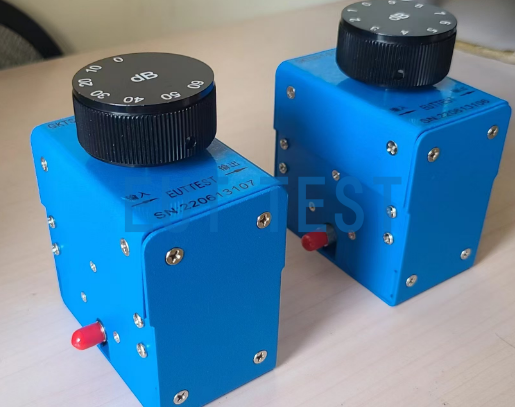
EUTTEST Variable Attenuators for Customers
What are the technical specifications to look for in a custom attenuator?
The operating frequency range of the attenuator (Hz):
Attenuators are commonly composed of resistive elements, which do not affect the frequency characteristics, and are commonly used in T-type or π-type network structures. The frequency characteristics of different resistive elements determine the frequency bandwidth of the whole attenuator, so it is necessary to determine the available frequency of the attenuator to be purchased according to the actual demanded RF frequency bandwidth.
Attenuator frequency is generally expressed in Hertz (Hz), and other units of measurement such as kHz, MHz, GHz, etc. are commonly used;
In addition, you need to determine a frequency range, which is the upper and lower passband frequency range of the attenuator, and you can additionally specify that certain frequencies must be cut off if desired.
The amount of attenuation or attenuation multiplier (dB) of the attenuator:
Regardless of the principle and specific structure of the attenuator, we can always describe the attenuator using two two-port networks, the T-type attenuator or the Π-type attenuator, as shown in the figure below.
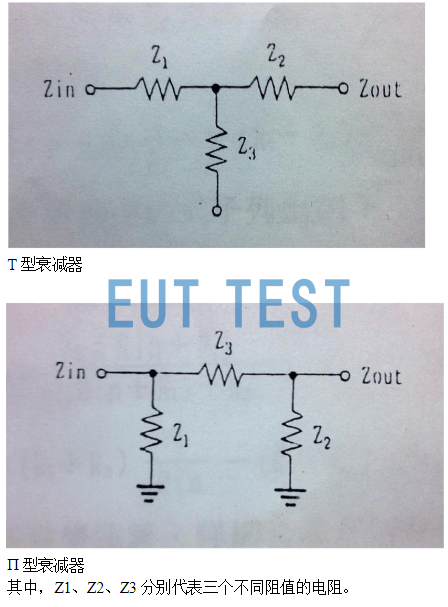
Describe the attenuator in terms of two two-port networks, T-type attenuator or Π-type attenuator
In the figure above, the power of the signal input is Zin, and the output power is Zout, the attenuator power attenuation is A (dB). If P1 , P2 expressed in decibels milliwatts (dBm), the relationship between the two ends of the power is:
P2 (dBm) = P1 (dBm) - A (dB)
It can be seen:
The attenuation is defined as: The range of change in power level of an RF power signal after it passes through an attenuator.
The attenuator multiplier is the result of taking the attenuation and calculating it using the dB formula; they are effectively equivalent.
The amount of attenuation is determined by the materials and construction that make up the attenuator. Because there are impedance matching problems in practical application, the A value will vary by an amount of 0-0.9 dB.
Maximum input power and average power (W) of the attenuator:
An attenuator is an energy-consuming element in which power is consumed by a resistive element and turned into heat. So the power capacity of the attenuator that has been produced has already been determined. If the attenuator is allowed to withstand more power than this limit value, the attenuator will be overloaded or even burned out, such abnormal use is not in line with the warranty process, so before designing and using the attenuator, you must clarify the power capacity of the attenuator with EUTTEST.
Voltage VSWR of the attenuator (smaller is better):
The impedance of the attenuator is fixed, the actual use of the front stage input circuit and the impedance of the rear stage input circuit and the attenuator itself will have a certain difference, then we need to use the following formula to convert the attenuator voltage VSWR:
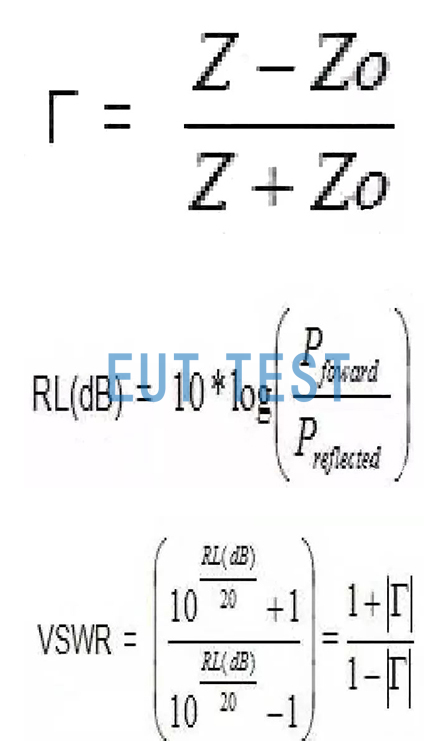
Voltage VSWR calculation formula for attenuator
reflection coefficient Γ , return loss RL, and standing wave ratio VSWR.
Z is the output impedance; Z0 is the input impedance; Pfoward is the forward power; Preflected is the reverse power.
Power factor of the attenuator:
Resistive elements are not linear devices in the RF field, the following figure shows the equivalent circuit of a resistive element

Equivalent circuit of an attenuator resistive element
So when the input power of an attenuator changes from 10mW to the rated power, the coefficient of variation of the attenuation is expressed as dB/(dB*W). The specific algorithm for the change value of attenuation is to multiply the coefficient by the total attenuation power (W). For example, a power capacity of 50W, nominal attenuation of 40dB attenuator power coefficient of 0.001dB / (dB * W), means that the input power from 10mW added to 50W, its attenuation will change 0.001 * 40 * 50 = 2dB as much!
The connector form of the attenuator:
Attenuator connectors are generally available:
- Type N:Generally can be used to 6GHz, can withstand power than BNC, high-frequency N head is also available, but expensive.
- BNC type:Generally used up to 1GHz, can withstand low power, simple and fast connectionThe
- SMA type:Generally EMC industry only used to 18GHz, it should be noted that SMA has a variety of models: 3.5mm 2.92mm 2.4mm 1.85mm 1mm; change the plug will damage the connector.
- 7/16 interface:General EMC industry to 7GHz, the advantage is that the input power can be up to a few thousand W than the N-type large, voltage is also much higher. So it will be used in the EMS in the RS radiation immunity test more.
Domestic and imported attenuators:
As an agent and sales service provider of electromagnetic instruments and equipment, Shenzhen EYT Test Technology Co., Ltd. can provide domestic attenuator and imported attenuator products.
difference:
- The main difference between imported or domestic attenuators is:Prices vary widely, and imported equipment is generally more expensive:
- Performance Differences:Some indicators of imported attenuators are better than domestic attenuators, for example, the attenuation offset of imported attenuators is smaller at the time of calibration, and there is no difference in most other key indicators. And EUTTEST attenuator in a variety of military industry, laboratories, universities and colleges and other units are also purchased and used, so there is no quality problem, customers only need to purchase according to their own budget can be, we will always provide customers with high-performance attenuator products.
EUTTEST can produce a customized range of attenuator parameters:
In order for customers to have a reference when choosing, we provide the following parameters for you to choose, if there is a question about a certain indicator, please go back to the previous section to view the relevant content of the introduction.
- Type optional:Fixed attenuator or variable attenuator (provides attenuation range and attenuation adjustment step);
- Frequency range is selectable: DC-40GHz.
- Attenuation: 0-100dB is optional, if you need a larger attenuation multiplier, please contact us first to confirm.
- Attenuation Step: When purchasing a variable attenuator, you will need to provide this parameter, typically ±1dB minimum.
- Power selectable:2W-10kW.
- Impedance is optional:50 Ohm or 75 Ohm (the EMC test industry generally uses only 50 Ohm).
- Connectors are optional:Optional (refer to Section 6: Attenuator Connector Forms).
- Imported or domestic?
This is how EUTTEST provides customized fixed attenuator and variable attenuator products to its customers:
- If you have determined your needs based on the above, please provide us with the parameters and EUTTEST will provide you with information such as attenuator product quotations and lead times.
- If you are interested in our customized fixed attenuator or variable attenuator service, or if the selection is not yet certain, or if you have other special needs, please feel free to contact us for more information.
- Disclaimer: Starting in 2024, all customized products manufactured by EUTTEST will bear the AOEMC brand identity.


